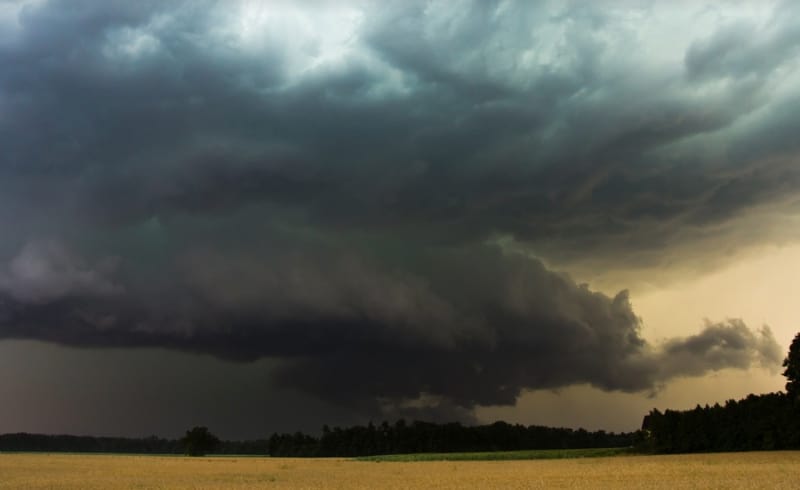Future active US SCS seasons will see losses eclipse 2023’s record: KCC

Severe convective storm (SCS) losses in the United States drove insurance and reinsurance market losses of $50 billion to $60 billion in 2023, but while this was above-average, risk modeller Karen Clark & Company warns that annual losses from the peril could be much higher.
Global reinsurance firm Munich Re put insured US severe convective storm (SCS) losses at around $50 billion for 2023, while reinsurance broker Gallagher Re opted for a higher figure of around $60 billion.
Wherever in that range the actual insurance market loss from US SCS events fell, the impacts of severe thunderstorms, large hail, straight line winds, derecho’s and other SCS peril effects were clear in 2023, but modeller Karen Clark & Company believes a future active season could lead to industry losses of a much higher level.
According to the firm’s KCC SCS risk model, while 2023 saw insured losses above-average for the peril, “the losses were not extreme.”
The company believes that first-generation catastrophe risk models are failing to capture the true impacts of SCS and so underestimate insured losses from the peril.
“(Re)insurers using the older, first-generation models will be habitually behind the impacts of climate change and will continue to underestimate the loss potential on their books of business,” KCC cautioned.
“A recurrence of 2017 or 2011 would result in higher losses. Future active seasons could easily lead to losses well above those of 2023, and we are likely to see such losses again within the next five years,” the company explained.
Adding, “Because the industry for years has been underestimating the losses from the frequency (aka secondary) perils, most notably SCS, it appears to many (re)insurers as if there is a significant increasing trend. Not only have the models used by many (re)insurers underestimated the risk, sources of market losses have also underestimated the total industry losses from these events. Because prior years have been underestimated, it seems as if 2023 is an outlier, but the more accurate KCC SCS Model shows there was nothing extreme or surprising about 2023.”
KCC further stated that, “Of course, potential SCS losses increase every year due to population growth and construction cost inflation. Building construction costs have increased significantly over the past ten years and the average cost to build a single-family home has nearly doubled. But once exposures are normalized to current values, there is no trend.”
This underestimation of SCS losses has caused havoc to the appetites of reinsurance and risk capital providers, diminishing it considerably for US SCS exposure, at least for the aggregation of smaller events.
KCC said, “Insurers would like to purchase additional reinsurance cover to smooth out the annual volatility of SCS losses. Many reinsurers have been pulling back from SCS covers because they don’t have the right tools to price the risk accurately.”
Much has been made about the SCS loss burden and how it is increasing, as well as the way some reinsurance capital providers were impacted by frequency losses flowing through aggregate deals in prior years, including the insurance-linked securities (ILS) market.
The first step is in accurately modelling the exposure and effects of the peril itself, which can help to inform risk appetite and structuring approaches.
There is enormous demand for reinsurance to better support primary insurers exposure to US SCS risks, but while losses are underestimated the chances of capital flowing back are relatively low at this time in the ILS market, we’d say.
Secondary or primary, however SCS is classed as a peril, unless you understand its effects and how losses manifest from it, in your book and more broadly, it’s very hard to see how appetites return meaningfully at this stage.
But, improvements in modelling will help dramatically and with brokers reporting some increased interest in providing reinsurance capital for “earnings covers” now, it will be interesting to see how any softening of the market at year-end affects appetite to deploy capital at these lower levels.






